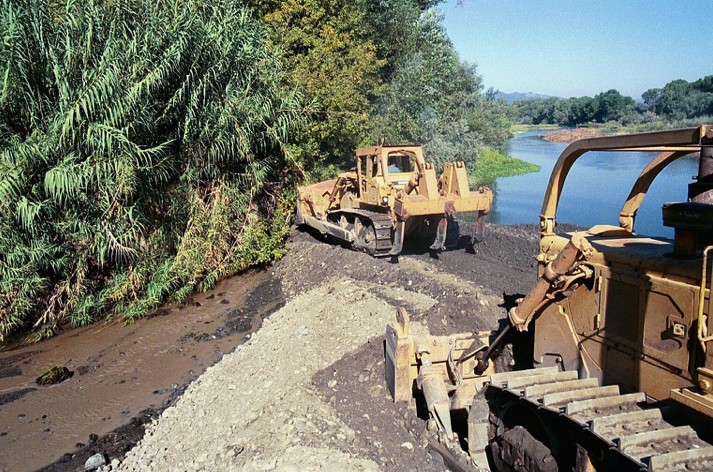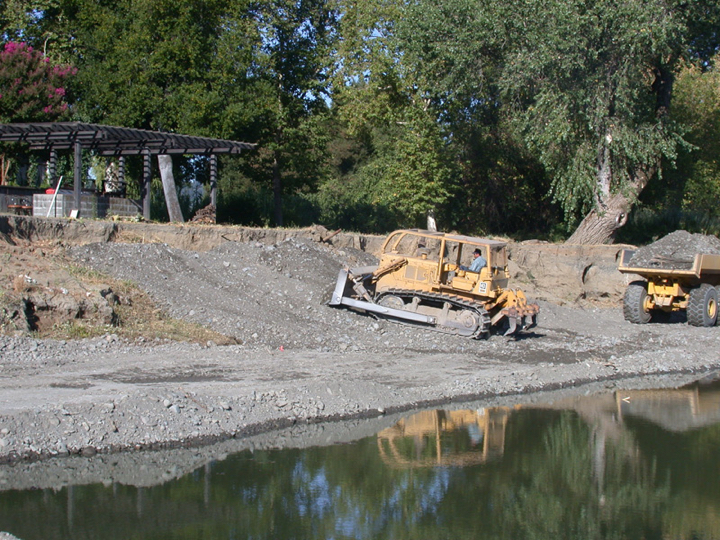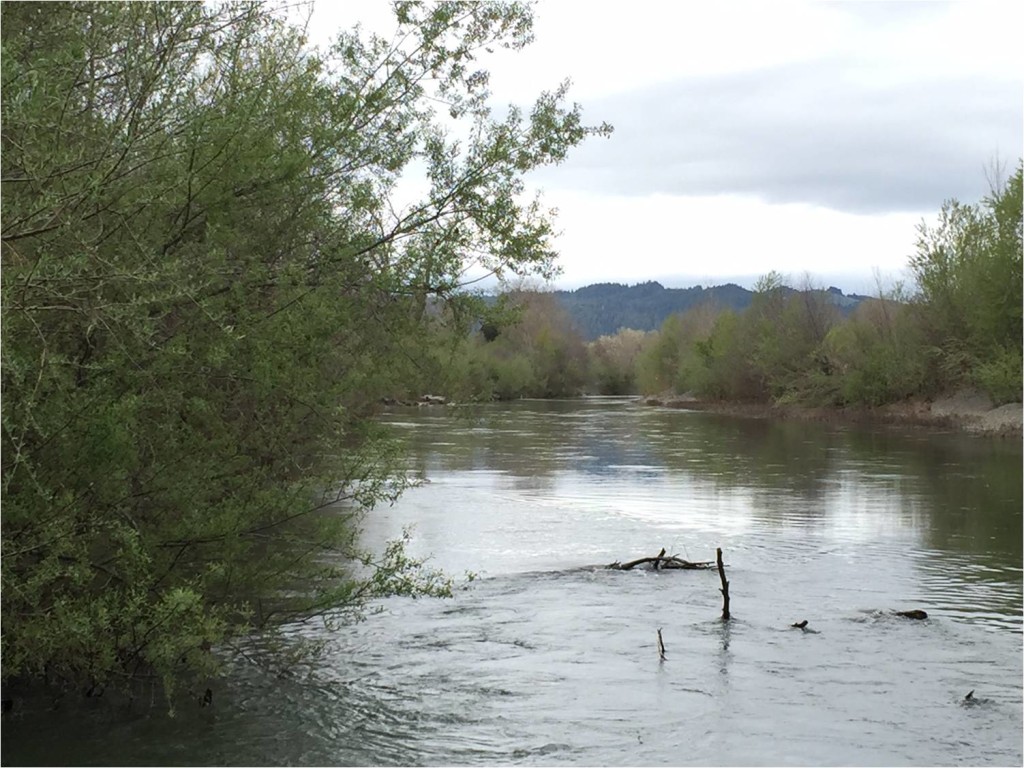2004 Asti Winery Riverbank Stabilization and Riparian Revegetation Project
Russian River
Cloverdale, California

This photo was taken in 1993. At this time there was a healthy riparian forest protecting the mansion and vineyard.

This is the site in 2004, just prior to construction of the project. For a complex of reasons, the riparian forest had eroded away, along with large portions of the vineyard property and facilities.
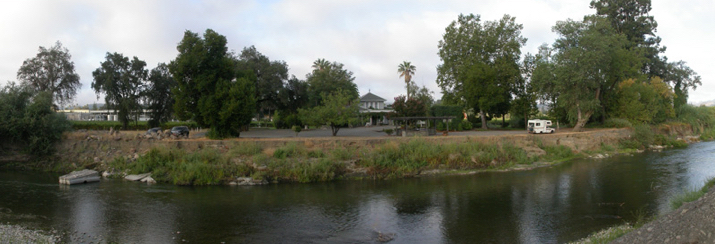
Panoramic view of the entire one thousand feet of the project site prior to restoration work. Large pieces of concrete in the river on the left are from the old basketball court and other structures that were eroded away.

A closer view the eroding bank, typical along the length of the project. The large old cottonwood tree would have been the next to go.
Building a Diversion Channel and Rebuilding the Rvierbank

The view across main channel toward secondary channel at the upstream end of project. The yellow arrow points to the secondary channel between two islands of willow.
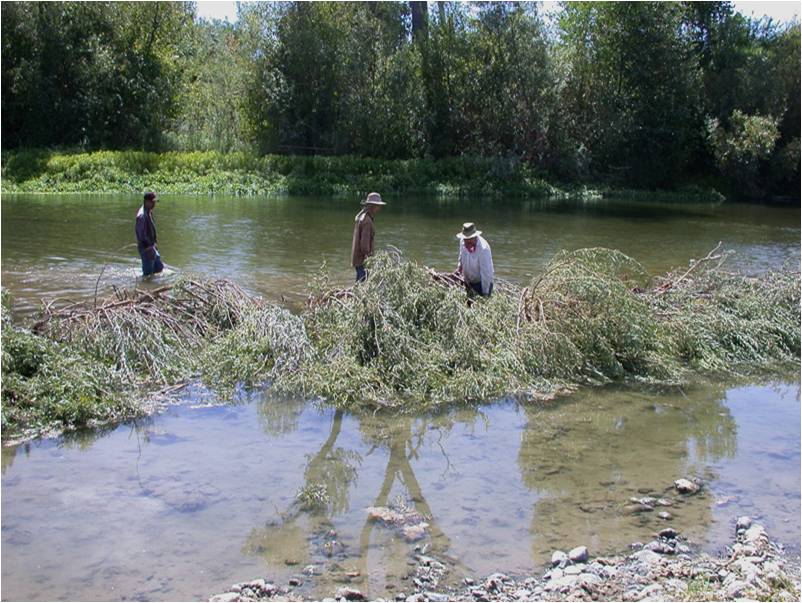
Farm workers spread the willow removed from the diversion channel out along a quiet spot in the river, making sure that the cut ends were under water.
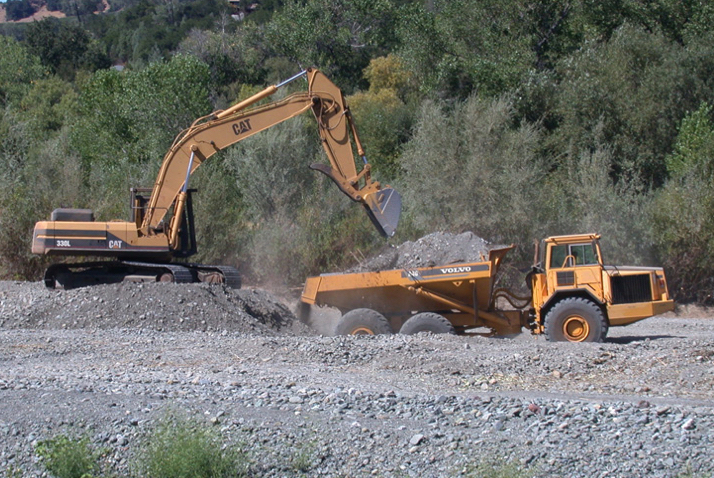
The secondary channel with the vegetation removed. The secondary channel had to be widened according to the hydrological design.

Gravel from the diversion channel was stockpiled along the river’s edge and was used to close off the flow to the work area.
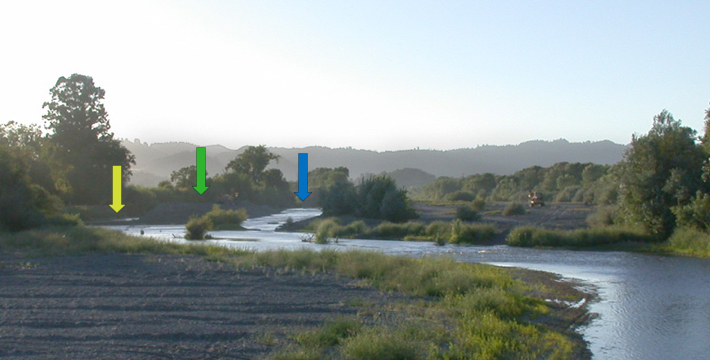
Looking upstream at the project site August 13, 2004. The river is in its new diversion channel (blue arrow). Excavated gravel is stockpiled and ready to rebuild the bank (green arrow) with diversion dams (yellow arrow) in place.
Stabilizing and Restoring the Eroded Riverbank and Creating a New Terrace Below It
The following bioengineering techniques were used to stabilize and restore the eroding Riverbank:
- Live Willow Brush Mattress with boulder toe
- Live Willow Siltation Baffles to capture and stabilize/revegetate a flood terrace adjacent to the riverbank
- Boulder, Rootball and Log deflector structures for additional protection and increased instream habitat diversity

BE’s excavator operator carefully placed the boulders, fitting them together in a single layer in order for the crew to drive live willow stakes between the gaps in the boulders and into the soil beneath.
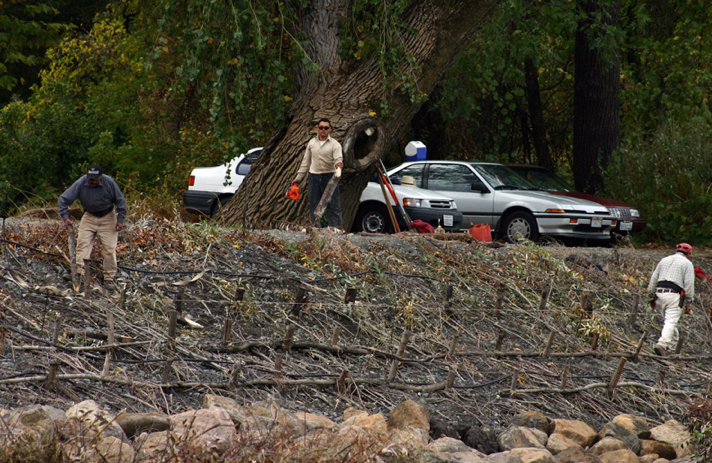
The Beringer Farm Crew installed a live willow brush mattress along the newly constructed riverbank.
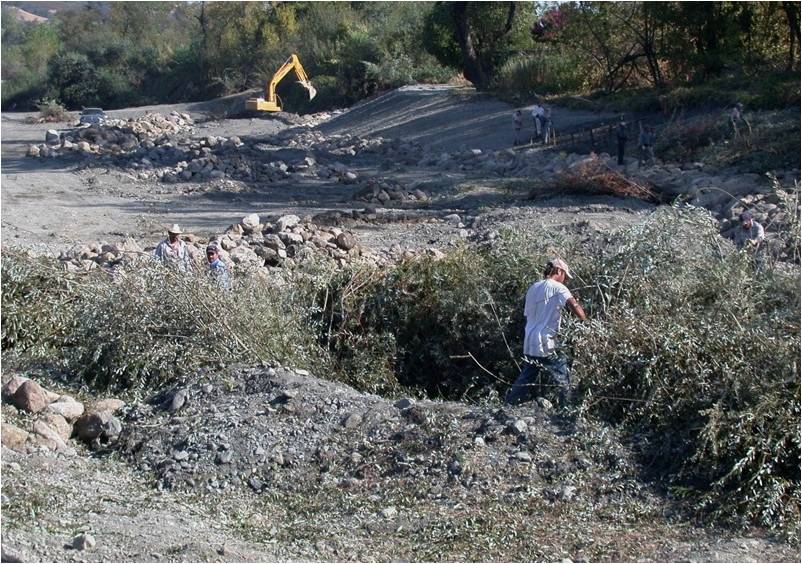
Live willow siltation baffles were constructed below the mattress to slow the flow of the river, accumulate sediment, and build a stable well vegetated flood terrace. A member of BE’s crew is placing a dense layer of live willow branches in the baffle trench.
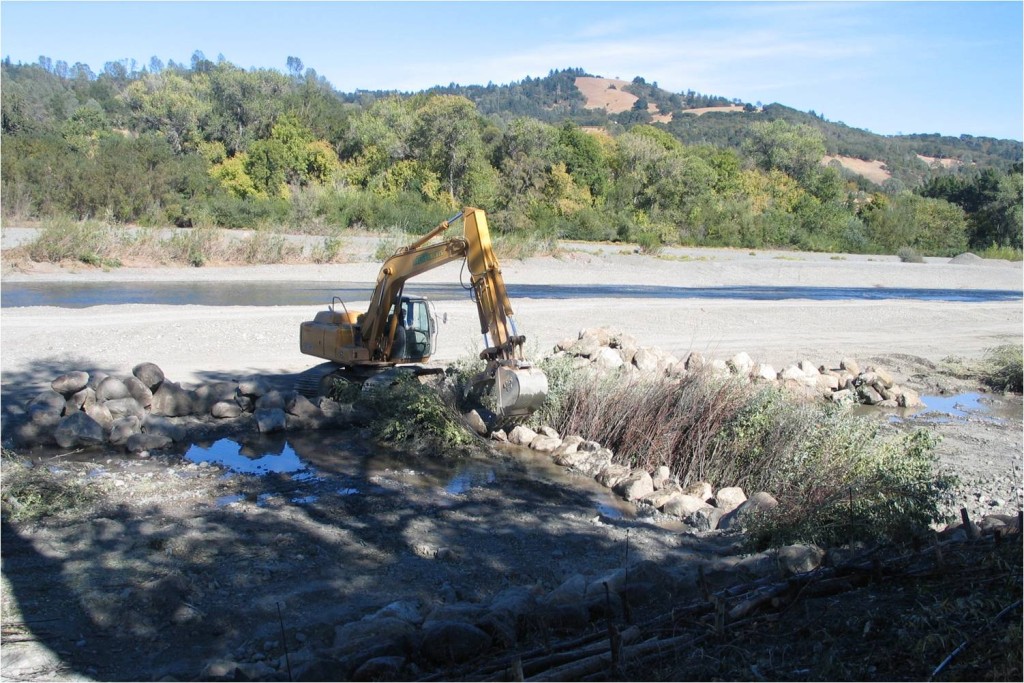
An excavator places boulders in the baffle trench to hold the branches in place and prevent scour at the toe of the structure.
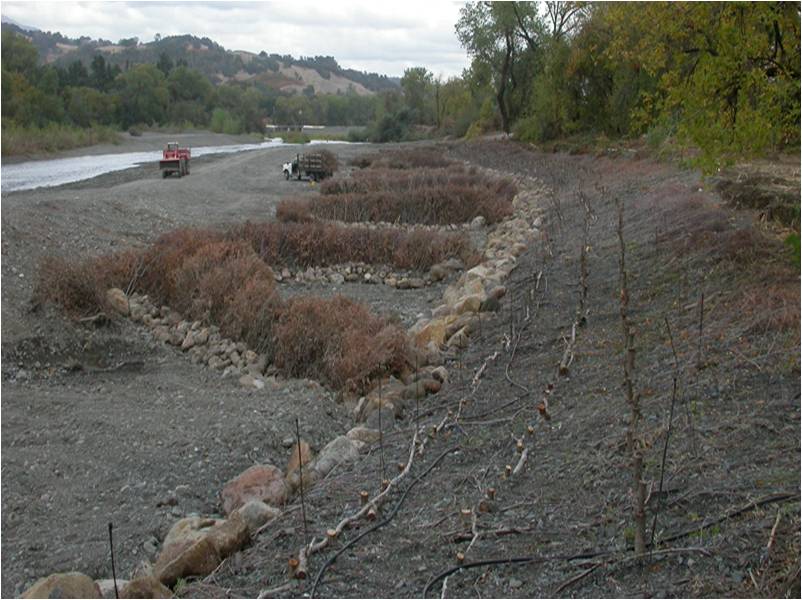
The last of the willow branches were delivered to the almost completed project. Note that the most upstream baffle is angled sharply downstream, just as the last baffle will be angled sharply upstream. This has the effect of directing flow into the baffles for rapid sedimentation, while at the downstream end the flow is directed away from the bank, decreasing the danger of bank scour downstream of the work.
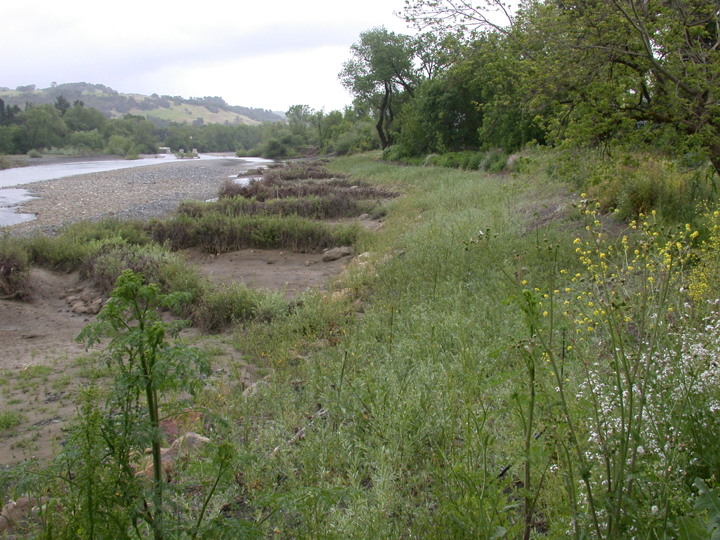
The mattress willow has begun its first season’s growth. The willow baffles have acquired bed load and sediment. By early May, six weeks later, with warmer weather and longer days, the willows have begun their rapid growth.
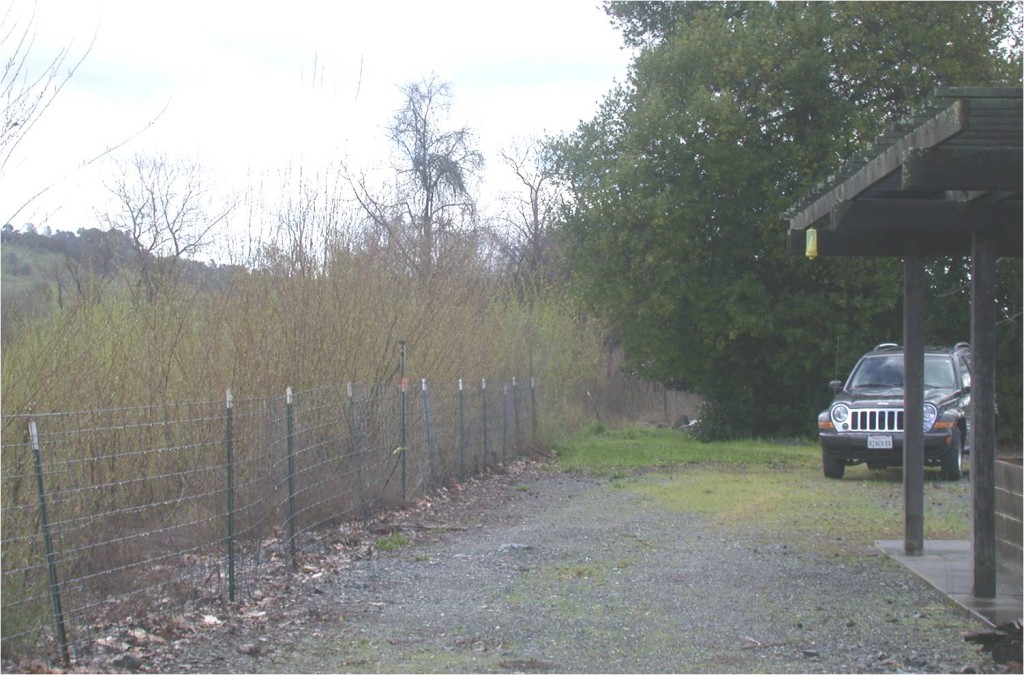
Over 60 feet of bank and terrace were recaptured along 1,000 feet of bank. The barbecue on the right was once in danger of falling into the river.

May 2009: The large old cottonwood that was once in danger of falling into the river is now protected.
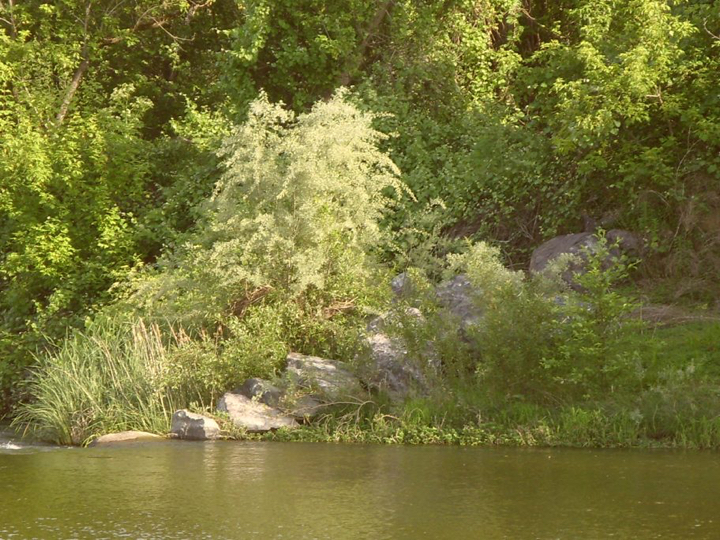
A Boulder Wing Deflector, barely visible through the new growth, protects the riverbank from erosion.

The live willow siltation baffles have created habitat alcoves along the constructed terrace. The alcoves provide slow water refugia for migrating salmonids.

2011: There is now a dense young riparian forest, slowing storm flows, trapping sediments and protecting the terrace and the riverbank above. The shoreline vegetation has continued to mature with increased shoreline roughness and plant diversity. With every winter storm more sediments drop out under the willows, building an increasingly stable bank. Water exiting this area is cleaner than when it entered.


